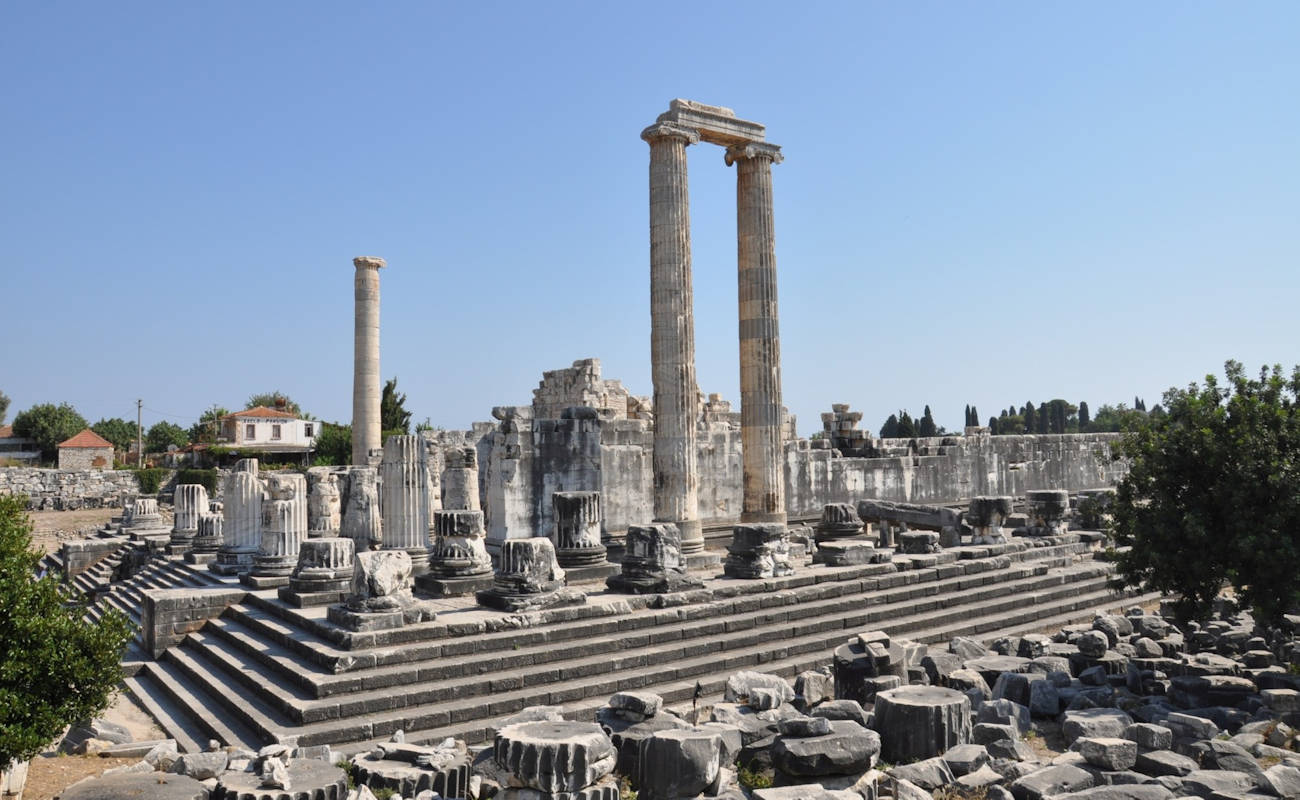
The Temple of Apollo at Didyma
The Temple of Apollo at Didyma, located in present-day Turkey, stands as a remarkable testament to ancient Greek architecture, religious devotion, and intellectual pursuits. Situated near the ancient city of Miletos and not far from the famous Ephesus, Didyma’s Apollo Temple was a sanctuary of immense importance in the ancient world.
The Temple of Apollo at Didyma, often referred to as the Didymaion, was dedicated to Apollo, the Greek god of prophecy, music, and healing. Its construction spanned several centuries, with work beginning in the 8th century BC and continuing into the Roman period. The temple’s grandeur and scale were awe-inspiring, featuring massive columns and intricate architectural details that exemplified the Doric style. The most distinctive feature of the temple was its imposing oracle, where a priestess known as the “Didymaion” would deliver prophecies inspired by Apollo, drawing pilgrims and seekers from across the ancient Mediterranean.
Ephesus, another prominent ancient city in the vicinity, shares historical and cultural connections with Didyma. Ephesus, known for its Library of Celsus, the Grand Theater, and the Temple of Artemis, was a hub of intellectual and artistic activity. These two neighboring cities, Didyma and Ephesus, were part of the Ionian League, contributing to the region’s cultural and philosophical achievements.
While the Temple of Apollo at Didyma and Ephesus served different religious functions, they both reflect the grandeur and sophistication of ancient Greek civilization. The Didymaion’s significance transcended its architectural magnificence; it was a center of prophecy and intellectual exchange, drawing scholars and philosophers who engaged in discussions and debates. Today, the ruins of the Apollo Temple continue to intrigue and inspire visitors, offering a glimpse into the spiritual and intellectual pursuits of the ancient world while enriching the historical tapestry of the region.
